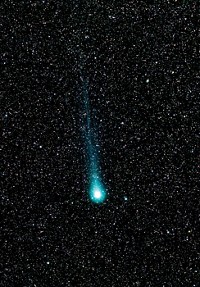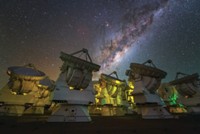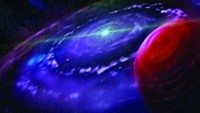Advertisement
Grab your lab coat. Let's get started
Welcome!
Welcome!
Create an account below to get 6 C&EN articles per month, receive newsletters and more - all free.
It seems this is your first time logging in online. Please enter the following information to continue.
As an ACS member you automatically get access to this site. All we need is few more details to create your reading experience.
Not you? Sign in with a different account.
Not you? Sign in with a different account.
ERROR 1
ERROR 1
ERROR 2
ERROR 2
ERROR 2
ERROR 2
ERROR 2
Password and Confirm password must match.
If you have an ACS member number, please enter it here so we can link this account to your membership. (optional)
ERROR 2
ACS values your privacy. By submitting your information, you are gaining access to C&EN and subscribing to our weekly newsletter. We use the information you provide to make your reading experience better, and we will never sell your data to third party members.
Analytical Chemistry
Interstellar Glycine Search Intensifies
Astronomers are engaged in a heated debate over possible sighting of prebiotic molecule in space
by Elizabeth K. Wilson
February 14, 2005
| A version of this story appeared in
Volume 83, Issue 7

It seemed at first that Yi-Jehng Kuan had finally bagged an elusive prey, one that his fellow astronomers had dogged for 25 years.
When Kuan, an astronomer at National Taiwan Normal University, and his colleagues announced two years ago that they'd spotted the amino acid glycine in star-forming interstellar clouds, the discovery was expected to strengthen the case for the occurrence of prebiotic chemistry beyond our solar system.
The simplest of the amino acids, glycine (NH2CH2CO2H) is also one of the most sought-after molecules in interstellar space. Though amino acids have been found in meteorites originating in our solar system, the confirmation of an interstellar source of glycine would imply that the building blocks of proteins, and perhaps the wherewithal for life, are widespread in the universe.
Glycine, however, is notoriously difficult to spot in a sea of other interstellar organic molecules, and the race to find it had been heating up in recent years. Now, Kuan's report is being formally contested in a new paper by another group, itself hot on the heels of interstellar glycine, and some of whose members Kuan and colleagues once worked with.
In the original work, which analyzed years of radio wavelength observation data in several different clouds in our galaxy, Kuan and coworkers, including astrochemist Steven B. Charnley at the National Aeronautics & Space Administration's Ames Research Center in Moffett Field, Calif., reported a precedent-setting number of characteristic rotational spectral lines that offered compelling evidence for the presence of the molecule [Astrophys. J., 593, 848 (2003)].
Now, Lewis E. Snyder, astronomy professor at the University of Illinois, Urbana-Champaign, and colleagues argue that some key glycine lines are missing in the observations and that other molecules could have produced some of the lines attributed to glycine [Astrophys. J., 619, 914 (2005)].
The debate has set the astrochemical community abuzz. Most of the researchers contacted by C&EN say they believe that glycine does exist in space but that an unequivocal detection has yet to be made.
But it's not for lack of trying. Astronomers have been searching for interstellar glycine since its lab spectra were first recorded in 1979. Several recent radio and millimeter wavelength emission studies of various sources by teams led by Snyder [Astrophys. J., 588, 353 (2003)]; astrophysicist Cecilia Ceccarelli at the Grenoble Observatory; astronomer Françoise Combes at the Observatory of Paris; and astrophysicist Maria Hunt at the University of New South Wales, Sydney, Australia, all have failed to find it.
Hopes were raised back in 1994, when Snyder and Kuan made a tentative announcement of the discovery of a few lines that could have been associated with glycine. After closer examination, the findings were retracted.
THE ISSUE has taken on an added intensity with the recent Kuan and Snyder papers. Several researchers contacted by C&EN alluded to a falling out between the groups--in fact, Kuan and Snyder were listed as coauthors as recently as 2002, when the glycine announcement was first made at an International Astronomical Union symposium in Australia.
Under the best circumstances, though, glycine is problematic. Because the molecule is photolyzed by ultraviolet light, astronomers have confined their searches to the deep, protected interiors of interstellar clouds--great masses of gas and icy dust particles from which stars coalesce. Glycine is relatively complex, and its huge number of rotational transitions creates a dense, impenetrable spectrum of weak lines.
Additionally, astronomers have to filter out interfering molecules. They have found more than 130 species, from ethylene glycol to cyanodecapentayne, many of which have rotational lines that could overlap and blend with glycine's.
Years ago, astronomers needed only to detect a few lines to make a case for a molecule's interstellar presence. As telescopes and their detectors have improved and chemists find more and more lines, the standards for what constitutes positive identification have also increased.
When Kuan's group reported a whopping 27 lines--albeit from different sources--from the rotational spectrum of glycine, it seemed that the bar had been raised even further. "That blows away the standard," says David E. Woon, a chemist at the Molecular Research Institute in Mountain View, Calif., and creator of the Astrochymist, an astrochemistry website.
But Snyder's rebuttal paper argues that some key glycine lines weren't there, and that molecules such as ethyl cyanide and vinyl cyanide could have produced some of the lines that were observed. "We think there's glycine in space, but the case has not been made," Snyder says. Additionally, he says, only a few of the lines were common to all three sources.
"Interstellar clouds are good spectroscopy labs," comments Lucy Ziurys, director of the Arizona Radio Observatory. "If you measured something in the lab and some of the lines are missing in space, you'd say something's wrong."
Charnley counters that his group had already discounted the possibility that ethyl cyanide and vinyl cyanide could be alternative line assignments and that "to fully address the missing lines issue will require new observational data."
Many astronomers, including Combes, Ceccarelli, and Hunt, say new searches are in order, particularly at lower frequencies, where there's less line confusion. "It is my opinion that these large molecules will not be discovered by radio and millimeter observations, but rather by terahertz observations of their bending modes," Ceccarelli says.





Join the conversation
Contact the reporter
Submit a Letter to the Editor for publication
Engage with us on Twitter